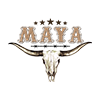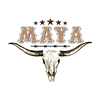DTF Transfers for Traditional Decorators: Add UV DTF, Print‑On‑Demand & Dropshipping to Your T‑Shirt, Hoodie & Hat Services
Introduction: Why DTF is a must‑have for decorators in 2025
If you run a business focused on embroidery, screen printing or vinyl, adding DTF transfers (direct‑to‑film) and UV DTF to your service mix is one of the fastest ways to increase revenue, serve eCommerce customers, and expand into print‑on‑demand and dropshipping. DTF solves common pain points: cost for small runs, full‑color detail, adhesion across fabric types, and speed. Combined with reliable fulfillment — same‑day pickup in Austin and nationwide shipping from providers like MAYA TX — DTF becomes a scalable growth channel for entrepreneurs, apparel brands, and Etsy or Shopify sellers.
Meta summary for quick scanning
DTF transfers let you print vibrant, durable designs on blank t‑shirts, hoodies and hats with low setup cost. UV DTF improves white opacity and curing speed. Add print‑on‑demand and dropshipping to remove inventory risk and grow online sales. Partner with fulfillment providers like MAYA TX for same‑day pickup and nationwide shipping.
Key SEO keywords covered
- DTF transfers
- UV DTF
- custom apparel
- blank t‑shirts
- hoodies
- hats
- embroidery
- print‑on‑demand
- dropshipping
What is DTF and what makes UV DTF different?
DTF transfers are printed designs on a PET film using pigment or specialized inks, then coated with hot‑melt adhesive powder and heat‑pressed to fabric. UV DTF incorporates UV‑curable inks or UV curing steps that rapidly cure the ink with ultraviolet light, producing higher opacity, faster handling, and improved durability. UV DTF is particularly advantageous when you need strong whites on dark fabrics or higher line speeds in production.
DTF vs DTG vs Screen Printing vs Embroidery: a practical breakdown
- DTF transfers: Great for small to medium runs, full‑color prints, photographic detail, and a wide range of fabrics. Lower setup cost than screen printing. Easier to integrate with POD/dropship models.
- DTG (direct‑to‑garment): Ideal for soft‑hand prints on cotton; print directly to garment without transfers but can be slower and is more sensitive to fabric blends.
- Screen printing: Best for very large runs and specialty inks (metallics, puff). Superior unit cost at scale but higher upfront setup for screens.
- Embroidery: Premium, tactile branding for logos and patches. Not suitable for photographic detail, but high perceived value.
Use DTF to handle complex color pieces and small runs that are uneconomical for screen printing, while retaining embroidery for textured, premium elements.
Benefits of adding DTF transfers for traditional decorators
- Lower setup cost for short runs and one‑offs, increasing profit on small orders.
- Superior color range and detail compared with vinyl or embroidery for photographic designs.
- Compatibility with many fabrics, including cotton, polyester blends and performance textiles.
- Easy integration with print‑on‑demand and dropshipping platforms to serve online customers without inventory overhead.
- Faster turnaround when using UV DTF and optimized curing workflows.
Equipment and workflow essentials
To offer DTF professionally, you’ll need:
- DTF printer (or access to a UV DTF provider): quality printheads and pigment/UV inks give better color and durability.
- Powder shaker and oven or curing station to melt the adhesive powder onto the print.
- Flat or hat heat press(s): different sizes and attachments for t‑shirts, hoodies and hats.
- Color management tools: ICC profiles, calibrated monitors, and test swatches to achieve consistent prints.
- QC procedures: wash testing, adhesion testing, and standardized pressing parameters (temperature, time, pressure) documented per substrate.
Many shops start by outsourcing to a dropship partner and then scale into in‑house printing as demand justifies equipment investment. MAYA TX offers dropshipping fulfillment as well as same‑day pickup in Austin, easing this transition: txmaya.com/dtf-transfers.
File prep and color management — practical tips
- Provide print‑ready files: 300 DPI at final print size, PNGs with transparent backgrounds, or layered PSDs/AI files for complex edits.
- Work in RGB for DTF and convert using vendor ICC profiles for best color match. Request test prints and adjust profiles as needed.
- Design considerations: avoid extremely thin strokes for hats and knitted fabrics; rasterize complex gradients at high resolution.
- Use spot whites strategically for dark garments rather than relying solely on opaque underbase when possible.
Pressing, curing and wash testing — quality control
Standardize pressing parameters for each blank t‑shirt, hoodie and hat. Example starting point:
- Temperature: 320–330°F (160–165°C)
- Time: 12–18 seconds for DTF transfers (adjust for thickness and press type)
- Pressure: medium to firm, ensure even contact across the transfer
Always run wash tests (multiple cycles) and abrasion tests before approving a design for production. Document failures and adjust your process — sometimes changing the blank, altering press time, or switching to UV DTF curing solves adhesion or cracking issues.
Sourcing blanks and quality considerations
The choice of blank t‑shirts, hoodies and hats affects final feel and durability. Consider:
- Fabric weight: heavier tees (5–6 oz) often feel premium and hold prints well.
- Fiber content: poly blends can be trickier for DTG but work with DTF; test wash and stretch.
- Sustainability: organic cotton and recycled poly command higher price points and attract eco‑minded buyers.
- Supplier reliability: consistent sizing, color and fit reduces returns and customer complaints. MAYA TX maintains a wide selection of blanks to help you scale quickly: Blank Apparel.
Print‑on‑demand and dropshipping: business models that reduce risk
POD and dropshipping let you sell without holding inventory. Two common approaches for decorators:
- In‑house POD: You print to order and ship directly. This gives full control over quality and branding but needs fulfillment capacity.
- Dropship partnership: A supplier prints and ships for you. This removes fulfillment labor and lets you scale faster. Choose partners that support custom packing slips and fast shipping. MAYA TX supports dropship fulfillment and nationwide shipping to serve your customers efficiently.
Pricing strategies and profitability
Price to cover blank cost, transfer cost, labor, overhead, platform fees and shipping. Aim for a gross margin of 40–60% on POD items depending on brand positioning. Example formula:
- Cost of blank + transfer + labor per unit + shipping + platform fees + desired margin = retail price
Offer tiered pricing for bulk orders and value bundles (e.g., embroidery + DTF combo) to increase average order value.
Marketing, product photos and SEO tactics
- Product photos: show on models, flat lays, and close‑ups of print detail. Include lifestyle shots to tell a brand story.
- SEO: target keywords like DTF transfers, UV DTF, custom apparel, blank t‑shirts, and print‑on‑demand across product pages and blog posts. Use descriptive alt text for images and structured product data where possible.
- Channels: sell on Shopify and Etsy, promote via Instagram and TikTok, and use paid ads to test winning designs quickly. See guidance on scaling from the Shopify Blog and POD case studies on Printful.
Fulfillment integrations and automation
Automation reduces errors and speeds fulfillment. Integrate your store with production queues or your dropship partner so orders flow automatically to print. If you hold blanks, sync inventory to avoid overselling and use SKU conventions that map to specific blank sizes and colors.
Returns, disputes and customer service best practices
- Set clear return policies and display them at checkout.
- Use tracked shipping and automated notifications to reduce disputes.
- Offer free replacements for manufacturer faults and photo evidence for claims to speed resolution.
Sustainability and ethical sourcing
Many customers value sustainable apparel. Offer organic or recycled blanks, minimize packaging waste, and highlight eco credentials in product descriptions. This adds perceived value and justifies higher prices.
Real‑world examples and side hustle strategies
Decorators who added DTF and POD often follow paths like:
- Launching a 10‑design seasonal capsule promoted via Instagram ads to validate demand before ordering blanks.
- Targeting local businesses for same‑day branded apparel using in‑store pickup and local delivery.
- Offering hybrid products (embroidered logo + DTF art) for premium brand clients.
These approaches create steady revenue streams and help you scale into full dropship or wholesale operations.
Where to learn more and trusted resources
- Printful resources for POD business models: Printful
- Shopify Blog for scaling and fulfillment strategies: Shopify Blog
- Oberlo for product trends and online selling tips: Oberlo
- MAYA TX services and fulfillment options: DTF Transfers, UV DTF, Blank Apparel
Final checklist: launch your DTF + POD offering in 30 days
- Decide: in‑house DTF vs dropship partner.
- Source test blanks and create 10 validated designs.
- Set up Shopify/Etsy listings with SEO‑rich descriptions and clear policies.
- Integrate order routing to production or your dropshipper.
- Run a small ad test or local promotion to validate demand.
Call to action
Ready to add DTF transfers, UV DTF, print‑on‑demand and dropshipping to your t‑shirt, hoodie and hat services? Partner with MAYA TX for same‑day pickup in Austin, nationwide shipping, dropship fulfillment and a wide selection of blank apparel. Order transfers, shop blanks, or get a fulfillment consultation here:
- Order DTF transfers: txmaya.com/dtf-transfers
- Explore UV DTF options: txmaya.com/uv-dtf
- Shop blank apparel: txmaya.com/blank-apparel
If you have questions about equipment, pricing, design prep, or integrating dropshipping with your store, contact MAYA TX for a tailored consultation and get started growing your custom apparel business in 2025.


















